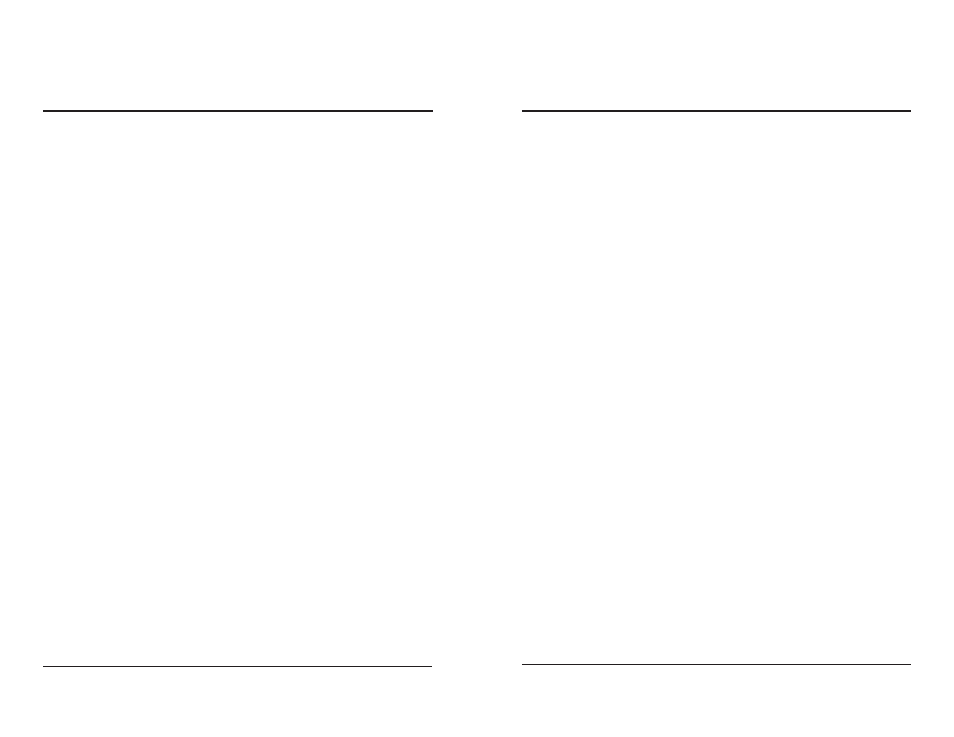Knox Video RS8x8HB User Manual
Page 6

KNOX VIDEO
RS8x8HB ROUTING SWITCHER
KNOX VIDEO
RS8x8HB ROUTING SWITCHER
Page 7
Page 8
3.1 INTRODUCTION
This section explains in detail the operation of the RS8x8HB using either the
front panel push-button switches or the RS232 port.
3.2 CONNECTIONS
Connect audio and video sources as described in sections 2.4 and 2.5.There is
no requirement that all inputs be used.
If outputs are left over they may be used like a distribution amplifier to buffer
and distribute an input signal.To use extra outputs in this way simply route the
input you wish to distribute to as many available outputs as desired.
Outputs may be looped back to unused inputs via short cables for the purpose
of adding delays, but be aware that if an output is then routed to that same input,
an illegal condition will exist and the output will oscillate at frequencies which
could spill over onto other crosspoints.
3.3 ROUTING VIA THE FRONT PANEL SWITCHES
3.3.1 HOW TO ROUTE AUDIO AND VIDEO TOGETHER
Select the destination (output) you wish to route a signal to and push (and
release) the front panel button with the number; the row of LEDs to the right of the
button you pushed will flash. Then select the source (input) audio and video you
wish to have routed to that output and push the front panel button with that input
number. The row of LEDs will stop flashing and the lamp corresponding to that
crosspoint will then glow steadily.
If you do not push an input button within ten seconds, the LEDs will stop
flashing and the crosspoint will remain where it was.
3.3.2 HOW TO ROUTE AUDIO SEPARATELY
Select the destination (output) you wish to route an audio signal only to and
push the front panel button with that number twice (two quick pushes).The row of
LEDs to the right of the button you pushed will flash, as when you route both
signals together. Then select the source (input) audio you wish to have routed to
that output and push the front panel button with that input number. The row of
LEDs will stop flashing and the lamp corresponding to the audio crosspoint will
flash slowly, while the LED corresponding to the video crosspoint will glow steadily.
If you do not push an input button within ten seconds, the LEDs will stop
flashing and the crosspoint will remain where it was.
SECTION 3. OPERATION
3.3.3 HOW TO STORE AND RECALL CROSSPOINT PATTERNS
The RS8x8HB has 8 stored routing map configuration memory locations. These
stored configurations are nonvolatile and are thus maintained during power
interruptions.
To STORE the currently loaded crosspoint pattern to one of the eight pattern
storage areas, push and hold input button #8; an S will appear on the LED display.
Then release button #8 and push an output button, 1 to 8, corresponding to the
storage area you wish to store the crosspoint pattern in.
To RECALL and load one of the stored eight crosspoint patterns from the
front panel, push and hold input button #1; an R will appear on the LED display.
Then release button #1 and push an output button, 1 to 8, corresponding to the
crosspoint pattern you wish to recall.
3.3.4 HOW TO START THE TIMED SEQUENCER
The RS8x8HB can be set to cycle continuously through its eight stored patterns
on a timed basis. To start the cycling, push and hold input button #4.
Push and hold input button #4 again to stop the cycling. The Timed Sequencer
can be disabled by putting switch 4 in the ON position.
3.4 ROUTING VIA THE RS232 INPUT
A simple protocol allows all crosspoints to be set through the RS232 port. The
RS232 port will accept inputs from a terminal, computer, or other software-driven
control device. No handshaking is required. The RS8x8HB RS232 port is configured
as a DCE. The pinout of this port allows connection to a PC-compatible 9-pin serial
COM port with a 1:1 data cable. (Data is sent from the router on pin 2, received on
pin 3. Pin 5 is common.)
Note: in the following commands the letters may be upper or lower case;
(ENTER) is the same as Carriage Return (in hex, a 0D). Do not add a Line Feed (in
hex, 0A).
